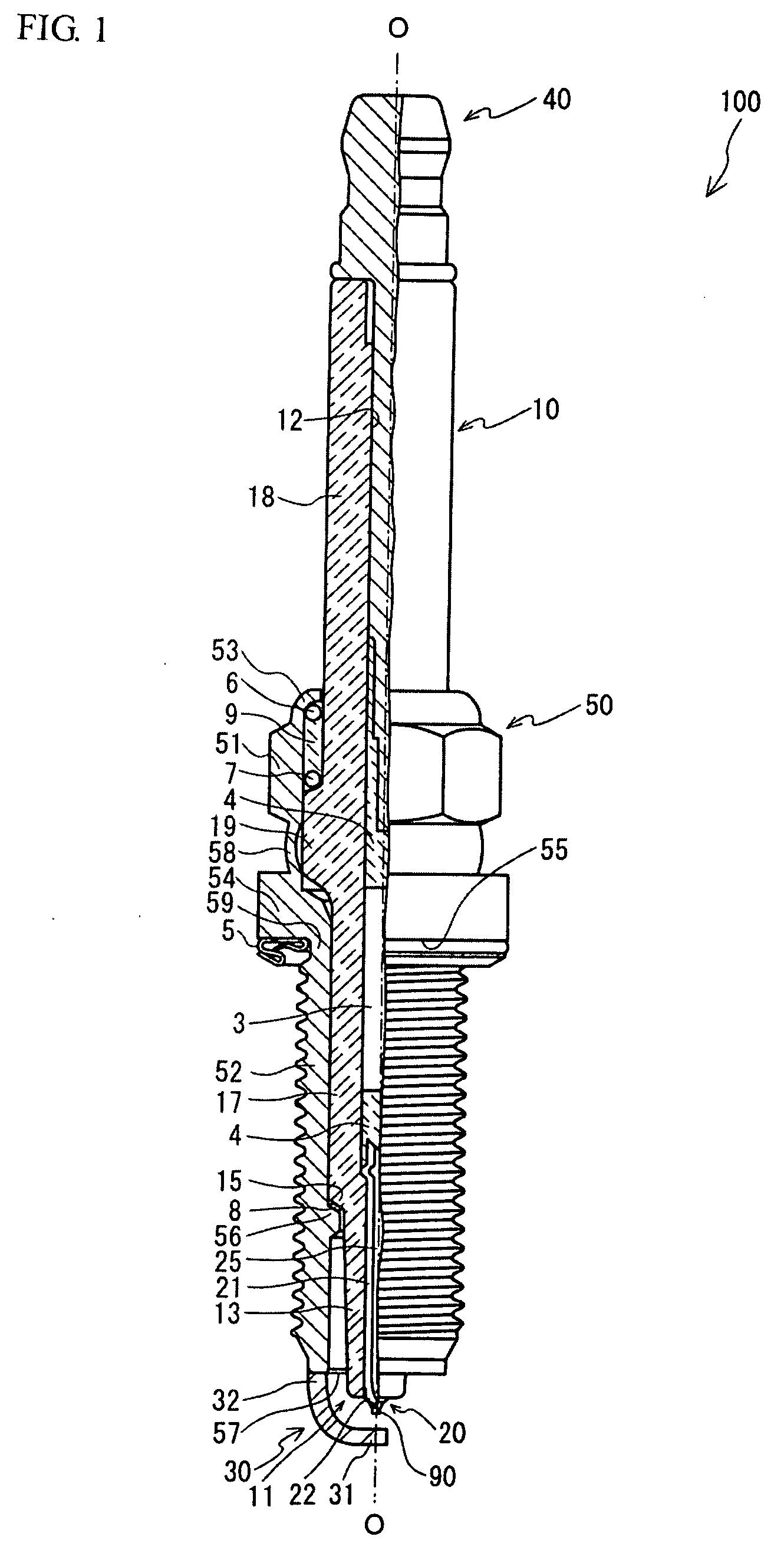Spark plug
a technology for spark plugs and internal combustion engines, which is applied to spark plugs, machines/engines, mechanical equipment, etc., can solve problems such as internal corrosion to progress, and achieve the effects of reducing specific resistance, increasing heat dissipation performance of electrode materials, and effectively increasing spark wear resistan
- Summary
- Abstract
- Description
- Claims
- Application Information
AI Technical Summary
Benefits of technology
Problems solved by technology
Method used
Image
Examples
example 1
[0062]In Example 1, confirmation was made as to whether or not the high-temperature oxidation resistance of the electrode material is affected by precipitates in the parent phase of Ni. In fabricating Samples 111 to 113 of the electrode materials, a raw material was used in which 0.45 wt. % of Y as the first additional element and 0.15 wt. % of Si as the second additional element were added to 99.40% wt. % of Ni, and this raw material was melted and cast by using a vacuum melting furnace to form an ingot. Subsequently, Samples 111 to 113 of the electrode materials were fabricated by using wires obtained through hot working and wire drawing and having a cross-sectional size of 1.3×2.7 mm. Further, in fabricating Samples 114 and 115, a raw material was used in which 0.50 wt. % of Nd as the first additional element and 0.15 wt. % of Si as the second additional element were added to 99.35% wt. % of Ni, and this raw material was melted and cast by using a vacuum melting furnace to form a...
example 2
[0065]Further, an evaluation test similar to that of Example 1 was conducted by using other elements as the first additional element. In fabricating each of Samples 211 to 214 of the electrode materials, a raw material was used in which 0.50 wt. % of the first additional element and 0.15 wt. % of Si as the second additional element were added to 99.35% wt. % of Ni, and this raw material was melted and cast by using the vacuum melting furnace to form an ingot in the same way as in Example 1. Subsequently, Samples 211 to 214 of the electrode materials were fabricated by using wires obtained through hot working and wire drawing and having a cross-sectional size of 1.3×2.7 mm. It should be noted that, in Samples 211 to 213, Ho, Gd, and Sm were respectively used as the first additional element, and intermetallic compounds (Ni—Ho, Ni—Gd, and Ni—Sm) respectively precipitated in the formed electrode materials. In addition, in Sample 214, two kinds, Y and Nd, were added as the first addition...
example 3
[0067]Next, an evaluation test was conducted to confirm the effect exerted by the content of the first additional element on the grain growth of crystal grains of the electrode materials. As for Samples 311 to 319 of the electrode materials, Y was added as the first additional element, and its content was varied, while the content of Si, which is added as the second additional element, was set to 0.15 wt. %, and the content of Ni was adjusted so that the balance is Ni. Specifically, in Samples 311 to 319, the content of Y as the first additional element was set in sequence to 4.00, 3.00, 2.00, 1.00, 0.45, 0.30, 0.10, 0.05, and 0.00 (wt. %), while the content of Ni was set in sequence to 95.85, 96.85, 97.85, 98.85, 99.40, 99.55, 99.75, 99.80, and 99.85 (wt. %). Through this adjustment, the content ratio (the content of the first additional element / the content of the second additional element) between the first additional element and the second additional element in Samples 311 to 319...
PUM
 Login to View More
Login to View More Abstract
Description
Claims
Application Information
 Login to View More
Login to View More - R&D
- Intellectual Property
- Life Sciences
- Materials
- Tech Scout
- Unparalleled Data Quality
- Higher Quality Content
- 60% Fewer Hallucinations
Browse by: Latest US Patents, China's latest patents, Technical Efficacy Thesaurus, Application Domain, Technology Topic, Popular Technical Reports.
© 2025 PatSnap. All rights reserved.Legal|Privacy policy|Modern Slavery Act Transparency Statement|Sitemap|About US| Contact US: help@patsnap.com



